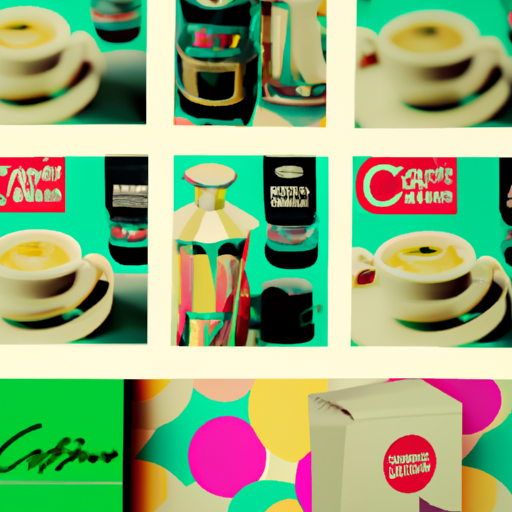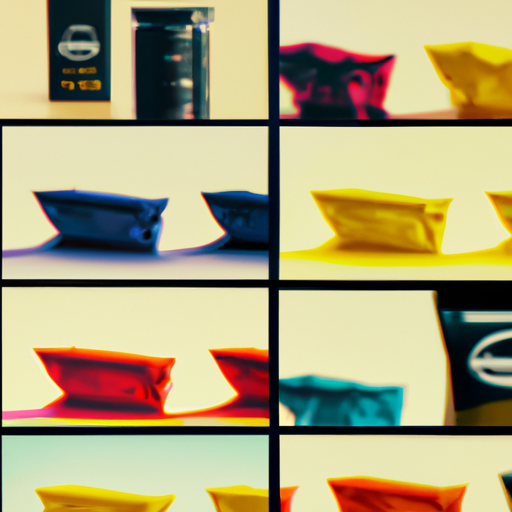
-
Table of Contents
Package Design for Coffee Brands: Waking Up Senses

Coffee is one of the most popular beverages in the world, with millions of people starting their day with a cup of joe. As the coffee industry continues to grow, competition among coffee brands becomes fiercer. In this highly competitive market, package design plays a crucial role in attracting consumers and creating a lasting impression. A well-designed coffee package can awaken the senses, evoke emotions, and ultimately influence purchasing decisions. In this article, we will explore the importance of package design for coffee brands and how it can effectively engage consumers.
The Power of Visual Appeal
When it comes to package design, visual appeal is paramount. A visually appealing coffee package can catch the consumer’s attention and make the brand stand out from the competition. The design should be eye-catching, unique, and reflective of the brand’s identity. For example, the iconic green siren logo of Starbucks is instantly recognizable and has become synonymous with the brand.
Moreover, the use of colors can have a significant impact on consumer perception. Research has shown that different colors evoke different emotions and can influence purchasing decisions. For instance, warm colors like red and orange can create a sense of energy and excitement, while cool colors like blue and green can evoke a feeling of calmness and relaxation. Coffee brands can leverage these color associations to create packaging that aligns with their brand image and target audience.
Storytelling through Packaging
Package design is not just about aesthetics; it is also an opportunity for coffee brands to tell their story. Consumers are increasingly seeking authentic and meaningful experiences, and packaging can be a powerful tool to communicate a brand’s values, origin, and unique selling points.
One example of effective storytelling through packaging is the brand “Intelligentsia Coffee.” Their coffee packages feature detailed information about the coffee’s origin, flavor profile, and brewing recommendations. This not only educates the consumer but also creates a sense of trust and transparency. By sharing the story behind the coffee, brands can establish a deeper connection with consumers and differentiate themselves from competitors.
Sustainable Packaging: A Growing Trend
In recent years, there has been a growing concern about the environmental impact of packaging waste. As consumers become more environmentally conscious, they are actively seeking brands that prioritize sustainability. Coffee brands can tap into this trend by adopting eco-friendly packaging solutions.
One example of a coffee brand that has embraced sustainable packaging is “Grounds for Change.” They use compostable coffee bags made from renewable plant-based materials. This not only reduces the environmental footprint but also appeals to consumers who prioritize sustainability in their purchasing decisions.
Moreover, sustainable packaging can also be a powerful marketing tool. A study conducted by Nielsen found that 66% of consumers are willing to pay more for products from sustainable brands. By incorporating sustainable packaging, coffee brands can attract environmentally conscious consumers and gain a competitive edge in the market.
Functional Design: Convenience and Freshness
While aesthetics and storytelling are important, coffee packaging should also prioritize functionality. Consumers value convenience and freshness when it comes to their coffee experience, and the packaging design should reflect these needs.
One key aspect of functional design is ease of use. Coffee packages should be easy to open, close, and reseal to maintain freshness. Brands like “Blue Bottle Coffee” have adopted innovative packaging solutions, such as resealable zip locks and one-way valves, to ensure the coffee stays fresh for longer.
Additionally, coffee packaging should be designed to protect the coffee beans from external factors that can affect the flavor, such as light, moisture, and oxygen. Brands like “Stumptown Coffee Roasters” use opaque bags with airtight seals to preserve the coffee’s freshness and flavor.
Case Study: Death Wish Coffee
A notable example of successful package design in the coffee industry is “Death Wish Coffee.” This brand gained widespread recognition after winning a commercial spot during the Super Bowl, and their package design played a significant role in their success.
Death Wish Coffee’s packaging features a bold and distinctive design, with a skull and crossbones logo that immediately grabs attention. The black packaging with contrasting white text creates a sense of mystery and intrigue. The design effectively communicates the brand’s promise of strong, high-caffeine coffee, appealing to consumers who seek an extra kick to start their day.
Furthermore, Death Wish Coffee’s packaging incorporates functional design elements. The coffee is packed in a resealable bag with a one-way valve, ensuring freshness and convenience for the consumer.
Conclusion
Package design for coffee brands is a powerful tool to engage consumers and create a lasting impression. A visually appealing design can catch the consumer’s attention, while storytelling through packaging can establish a deeper connection. Sustainable packaging not only appeals to environmentally conscious consumers but also provides a competitive advantage. Functional design elements, such as convenience and freshness, are essential for a positive consumer experience.
By understanding the importance of package design and incorporating these principles into their branding strategy, coffee brands can differentiate themselves in a crowded market and awaken the senses of their target audience.
